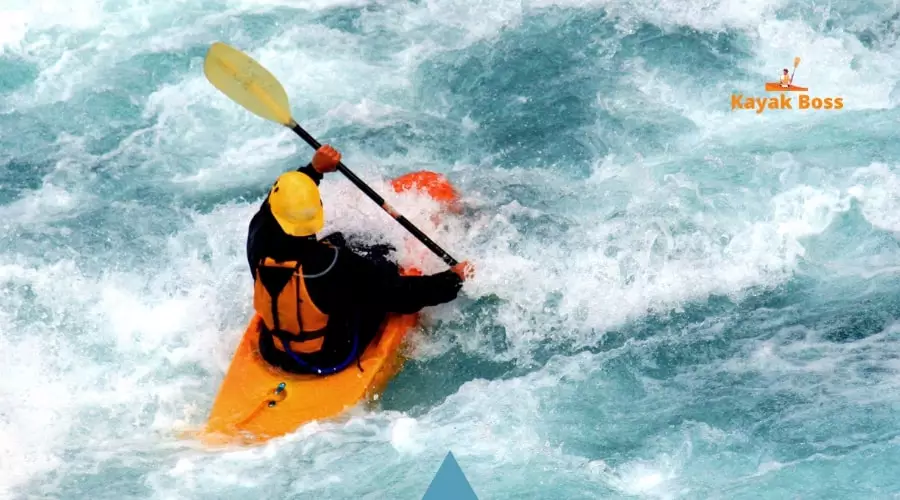Kayaking vs. canoeing is a dispute that has been going on for thousands of years. Although a canoe and a kayak may appear to be alike, they have several distinct characteristics that make them best suited to various settings and applications. If you’re not sure which is better, this article will explain the significant distinctions, benefits, and drawbacks of Single Person Canoe vs. Kayak.

Significant Differences
The main difference between Canoes and kayaks comes in a variety of shapes and sizes, and some are so specialized that it’s not always clear what category they belong in. To simplify things, these are the key distinctions between canoes and kayaks.
Structure: Open vs. Closed
The most apparent distinctions may be seen in the way the boats are built. Canoes are bulkier than rowboats, with a broad frame and open top to accommodate several people and more luggage. On the other hand, Kayaks are smaller, more streamlined boats built for speed or enjoyment, such as whitewater rafting, high seas paddling, or river excursions.
Seating: Which one is Comfortable?
Boarding a canoe is considerably easier than getting inside or out of a kayak because of its open-top design; it’s as easy as hopping on board. Paddlers can balance themselves on the sides of the canoe or a nearby pier, then stand up once inside. In order to avoid tipping the kayak, the paddler must move their legs within the cockpit while keeping balance.
Paddling
Although a canoe can be more convenient than a kayak, the big deal is paddling. Since canoes are bigger and heftier, paddling is more challenging, typically needing two people. Kayak paddles feature a blade on either end for a single paddler, but canoe paddles are smaller and have a single blade that dips into the water and a knob or “T” on the other end.
One hand grips the canoe paddle in the center for power, and the other grasps the paddle at the knob end for control. In order to maintain track of the canoe, two individuals alternate their strokes – frequently easier said than done. Amid the paddle, the paddler takes both hands on a kayak, dipping either end in the water interchangeably.
Balance and Movement
A canoe is usually stabler than a kayak, but a kayak is quicker and simpler to operate. The reason is that a kayak is typically thinner and is built up with a bow and stern slightly bent upwards, known as a “rocker.”
Canoes, on the contrary, have a steadiness advantage because of the exact opposite reason. On calm seas, a canoe’s broader hull provides more stability, enabling the paddler to maneuver the boat without any risk of tipping. However, both contemporary kayaks and canoes are pretty sturdy and hard to crash.
Kayaks and canoes may be utilized for a variety of activities like fishing, long-distance expeditions, river paddling, and camping; yet, each has its own set of advantages.
Application: Kayak vs. Canoe

Canoes may be a better alternative for individuals seeking to spend a peaceful day on a serene lake with a cooler as well as some friends since they have more storage capacity for both people and goods. In comparison, a kayak is generally more suitable for people seeking adventures such as whitewater rafting, deep water fishing, and ocean paddling.
Although canoes might provide a more serene escapade through inland lakes and rivers, if you intend on going for big waters like the Great Lakes or the ocean, you certainly require a sea kayak.
Gear Storage
For kayak versus canoe, carrying equipment is somewhat different. Canoes offer increased versatility, of course, with a broad deck capable of conveniently stored coolers or camping goods.
Although Kayaks have more than sufficient storage, especially bigger sea kayaks, the storage is typically under the deck in waterproof holders. Although most kayaks include a tiny dry storage compartment right behind the cockpit, accessing goods while on the water might be difficult if you don’t prepare beforehand.
What’s Better – A Canoe or a Kayak?
Speed
Kayaks have the upper hand in terms of overall speed for numerous reasons. Because they are lower in the water, there is less wind resistance, resulting in increased speed. Since canoes are broader and flatter than kayaks, they have more excellent water contact and sit deeper. This implies that the canoe must cut through the water, whereas the kayak floats above.
Conclusion
Both canoeing and kayaking have several advantages, and which one you select is mainly determined based on your circumstances and interests. Hopefully, the information on Single Person Canoe vs. Kayak will help you make an informed choice. Before committing all of your time and money to one or the other, you should absolutely test both.
